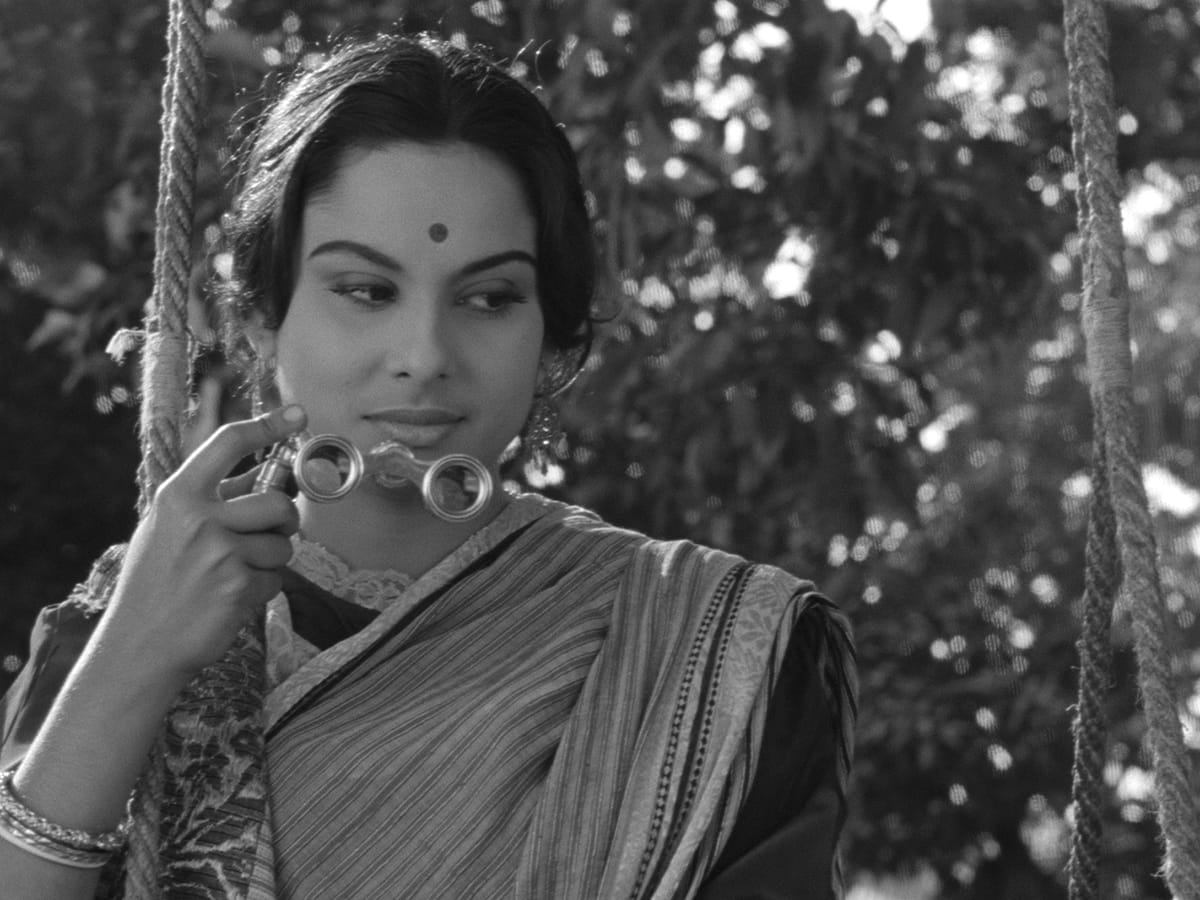
Satyajit Ray’s exquisite story of a woman’s artistic and romantic yearning takes place in late nineteenth-century, pre-independence India, in the gracious home of a liberal-minded, workaholic newspaper editor and his lonely wife, Charulata. When her husband’s poet cousin comes to stay with them, Charulata finds herself both creatively inspired and dangerously drawn to him.
EN
“It’s the one with the fewest flaws.”
Satyajit Ray1
“In the opening segment of the film (roughly 7 and a half minutes), Ray takes full advantage of the cinematic apparatus at his disposal, in search of a ‘language entirely free from literary and theatrical influences’. Dialogue is almost done away with; sound cues and music are carefully selected and introduced with pin-point precision, and the action and camera movement are orchestrated to mediate between Charu’s reflective pauses and moments of acceleration. The end result is a wonderfully intricate, almost composed tableau that already discloses Ray’s thematic concerns as well as his formal approach.”
Neel Chaudhuri2
“There is a characteristic Ray scene – perhaps the characteristic Ray scene. A shadowed interior, shuttered against the sun; rooms rather large and cluttered, with the sounds of birds or animals just penetrating the walls; two people, arriving at some moment of discovery about themselves, caught in an instant of absorbed silence. Nothing is going to be said, because emotionally we are still in a climate of Victorian reticence. Writers as far apart as Henry James and Chekhov have known the power of such moments, when the tension (not necessarily sexual tension; it can take other forms) builds up against the safety-valve of social convention, and the suspense is in the unbreakable silence.”
Penelope Houston3
- 1John Wakeman, World of Film Directors: 1890-1945 (California: H.W. Wilson, 1988), 845.
- 2Neel Chaudhuri, “Charulata: The Intimacies of a Broken Nest,” Senses of Cinema, April 2004.
- 3Penelope Houston, Sight & Sound, Winter 1965/66.

